Homepage / News Details
How many kinds of sewage treatment agents are there? What are commonly used sewage treatment agents?
- Categroy:News
- Author:
- Origin:
- Release Time:2022-01-20 10:45
- Views:
【Summary】How many kinds of sewage treatment agents are there? What are commonly used sewage treatment agents?
How many kinds of sewage treatment agents are there? What are commonly used sewage treatment agents?
【Summary】How many kinds of sewage treatment agents are there? What are commonly used sewage treatment agents?
- Categroy:News
- Author:
- Origin:
- Release Time:2022-01-20 10:45
- Views:
Water treatment agent is a chemical agent used in industrial water, domestic water and wastewater treatment process. In the process of industrial water, domestic water and wastewater treatment, chemical agents added to clean water, control corrosion, scaling and microbial slime are called water treatment agents. Water treatment agents include chemicals used for the disposal of water in industry, agriculture, environmental protection, urban construction and daily life, relating to cooling water, boiler water, drinking water, air conditioner water, sewage and process water including oil production water.
1. The flocculant
Flocculants are generally divided into three categories: inorganic flocculants (polyaluminum chloride, polyferric sulfate, aluminum sulfate, etc.), organic flocculants (polyacrylamide, acrylamide copolymer, polyethylene imine, etc.), natural polymer flocculants (starch. Chitosan, guar gum, etc.).
2. The corrosion inhibitor
Generally speaking, it is divided into inorganic corrosion inhibitors (chromate, nitrite, silicate, etc.), organic corrosion inhibitors (phosphate, phosphonic acid, etc.)
3. The scale inhibitors
It is divided into natural polymer scale inhibitor (lignin, cellulose, chitosan, etc.), phosphorus-containing polymer scale inhibitor, polymer scale inhibitor (polyacrylic acid, sodium polyacrylic acid, etc.)
4. The fungicide
Including oxidized fungicides and non - oxidized fungicides. ① Oxidation fungicides mainly include chlorine series (such as chlorine, chlorine dioxide, stable chlorine dioxide, hypochlorous acid, sodium hypochlorite, etc.), bromine series (such as bromine, active bromine, chlorine bromine, etc.), ozone and hydrogen peroxide. ② Non-oxidizing fungicides mainly include ionic fungicides, non-ionic fungicides and compound fungicides.
5. Cleaner
There are many kinds of cleaning agents. According to the characteristics of cleaning agents, they can be divided into acid cleaning agents, alkaline cleaning agents, chelating cleaning agents and cleaning auxiliaries. In fact, the cleaning agent should be selected according to the material and structural characteristics of the cleaning object.
6. Adsorbent
Commonly used sorbents are carbon as raw materials of various activated carbon sorbents and metal, non-metallic oxide sorbents (such as silica gel, alumina, molecular sieve, natural clay, etc.). The adsorbent with considerable scavenge agent 0 is activated carbon, which has good adsorption performance but high cost. It was used to adsorb toluene in water in songhua River event. Followed by molecular sieve, silica gel, active aluminum, polymer adsorbents and biological adsorbents.
7. Defoaming agent
The chemical structure and composition of defoaming agent can be divided into mineral oil, alcohol, fatty acid and fatty acid ester, amide, phosphate ester, silicone, polyether, polyether modified polysiloxane defoaming agent and so on.
Releate News

Time of issue : 2024-04-15 16:52:27

Time of issue : 2024-04-09 10:13:04

Time of issue : 2024-04-01 17:10:12
CONTACT US
PRODUCTS
CALCIUM HYPOCHLORITE
TCCA
SDIC
BCDMH
FEEDBACK
© 1999-2018 北京网站建设有限公司 Copyright © 2012-2022 All Rights Reserved Powered by www.300.cn 冀ICP备12012949号 津公网安备 12010302002173号 Seo tag

